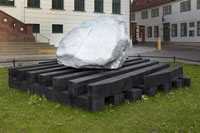Marc
Bijl
Individuals act, but those actions exist within the context of the full set of patterns of action, interaction, and resource transfers among all persons, all of which constitute the structure of society. Social structures do emerge from individual actions, as those actions are patterned across individuals and over time, but individ-ual actions also occur in the context of the social structure within which the individuals exist. In this way, social structure is a very abstract idea. It is not something we experience directly. We are not directly tuned to these patterns as they occur across persons and over time. Nevertheless, we can become aware of them and study them. Many of the patterns are well recognized, named, and attended to family, certain brands, religion, society and so on.
Some are recognized, but harder to point to, such as »the working class« or »the country club set« that do not have a legal status and do not maintain offices or locations. We can only point to individuals who may contribute to the patterns of behaviour that constitute the structure. Some structures we tend not to see at all (without special effort or thought) such as the patterns of action that block access of African Americans to the education system or the patterns of actions that create the »glass ceiling« in organizations preventing qualified women from rising to positions of power and authority. Nevertheless, these too are parts of social structure and it is the job of sociologists to discover, attend to, and understand these patterns.
Excerpt from:
Jan E. Stets, Peter J. Burke, »A Sociological Approach to Self and Identity«, in Mark Leary, June Price Tangney (Hg./eds.), Handbook of Self and Identity (New York/London: The Guilford Press, 2003).










